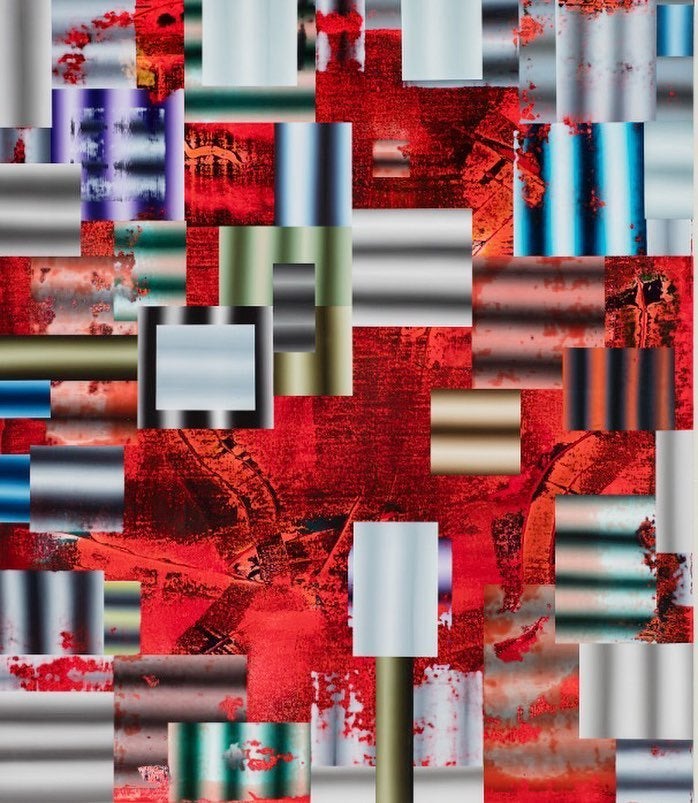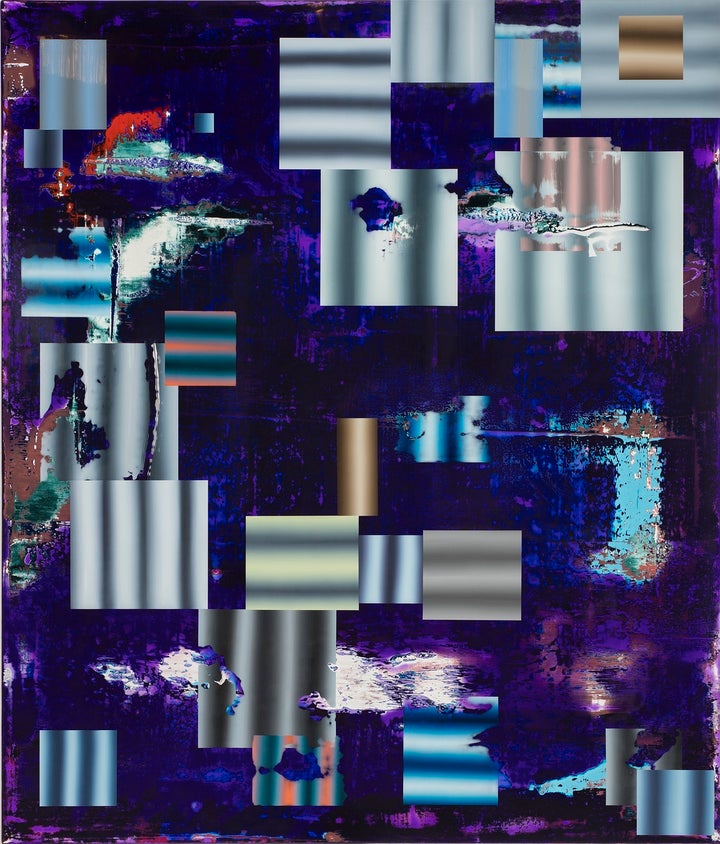
Adam Ross: Until the end of the world (#2)
Wim Wenders’ 1991 avant-garde epic Until the End of the World was a globe-spanning tech-infused romance in which a major plot point was the invention of a headset that could record memories in such a way as to then be able to show them to others, bypassing the viewer’s optic nerve and transmitting them whole, complete with images, like films beamed directly into the viewer’s neocortex, such that even a blind person could, in neurological terms, see them. So that happened.
Though a dedicated abstractionist with only attenuated references to imagic content, Adam Ross references all of the above in his choice of title for his new exhibition of painting and drawing, as well as nodding to the classic science fiction trope of planetary apocalypse. In fact, Ross regularly turns to the world of sci-fi authors like JG Ballard, Philip K. Dick, and William Gibson for inspiration -- both in ideas and aesthetics. His non-figurative paintings are slick, high-gloss works with palimpsestic, geological depth and variegation. A bit surreal, a bit cosmic, and capped with shapes of gradient hard-edge color blocks, these paintings perform all the top jobs of modern art, beckoning and repelling the eye, working all over and in flatness, creating bounce and depth and tethering its quasi-organic profusion of detail to the world of in-studio artifice. It’s a bit like abstraction might look in the “future.” Dire, dark, and lavishly gorgeous, if these paintings are about a world without human bodies, they seem to posit that such a place might be beautiful. The singularity is 30 years away, the time when we will be able to download our consciousness into a digital lifestream. Consciousness without a body? Painting without a painter.

Adam Ross: Until the end of the world (#3)
On some level, Ross’ work has always been about how it was made, but that is far from the whole story. The rest of the story is story. They have also been about landscape, science fiction, and the historical narrative of the end of modernity -- aka the end of the world. The hand of the artist is determinedly not visible in the finished geode-like grounds, nor in the chromatic titanium-like floaters -- achieved by sanding and other non-brush technology. And yet in confronting the obvious physicality of the process, it is impossible not to imagine the artist at work. The refusal of gesture and brushwork is part of a strong 20th-century art-historical arc, but in Ross’ lexicon it is also a neat analogy for the post-humanist view of the future, one in which humanity is subsumed into technology and the world moves into the next phase of evolution, perhaps without us. The featuring of hard-edge elements in this context can be read as part of this metaphorical continuum as well.
Ross’ drawings reference hard-edge abstraction too, using not sanding but the architectural language of tape and rulers instead of the sketch. He is known for working in what are called “connected drawings,” which are installed as multi-leaf suites, with a vector of works hung edge to edge. Called the Hell of Connectivity suite, the new iteration of the project is post-landscape, dealing with the physical and figurative concept of depicting erasure, viewing the newness of city as a kind of violent forgetting. Largely black and white, the pops of color exist to both engage and disrupt the progression between works. Inspired to begin this new cycle during a fellowship in Rome some 18 months ago, the suite is again intended to be viewed as a singular installation made of individual pieces. It is a momentary event, an ephemeral configuration. Unframed, they flutter in slight breezes, such as the movement of viewers. They are vulnerable physically, and optically reticent in an analogous position to humanity and our precarious experience in the world that is to come.
ADAM ROSS Until the end of the world || CHIMENTO CONTEMPORARY | Dates: April 1 - May 20, 2017 | Opening Reception: Saturday, April 1, 2017, 5 - 8 p.m.
